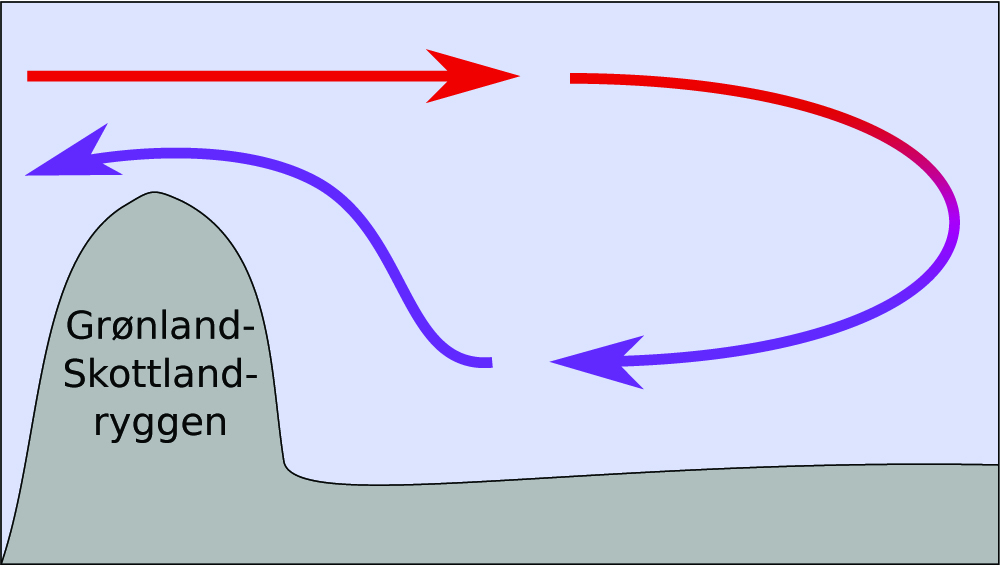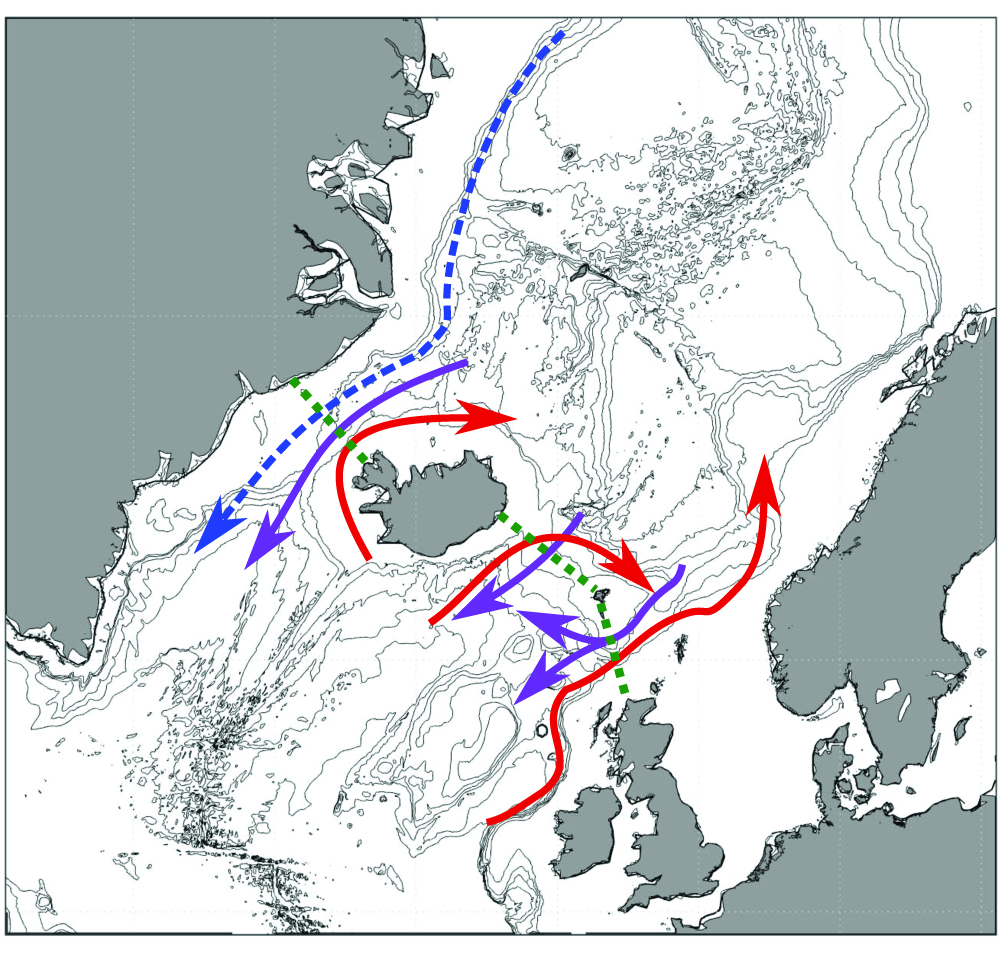The importance of the Gulf Stream for the northern European climate is well-known. Warm water masses are transported northwards and gradually release heat to the atmosphere, which together with the westerlies give a mild and wet coastal climate. When the warm water masses are cooled, they are transformed into colder, heavier water masses, which sink and return southwards at depth.
Speculations whether this circulation may stop have resulted in much attention, including the movie The Day after Tomorrow from 2004. New research shows (luckily) that this scenario is very unlikely. Still, the strength of the Gulf Stream varies, both on a daily and yearly basis.
Time scale and location
On longer time scales (decades) the heat loss itself and transformation from warm to cold water masses are the main drivers of the Gulf Stream. On very short time scales (days) the wind and passing storms affect the strength of the Gulf Stream. But what is more important on a monthly and yearly basis? We tried to answer this in a new study now published in Journal of Climate.

The northern extension of the Gulf Stream towards the Arctic is not a single current, but follows several paths both east and west of Iceland. The cold water masses returning southwards at depth also pass on both sides of Iceland, over the Greenland-Scotland Ridge. How strong the warm water masses flow northwards together with how strong the cold water masses flow southwards is a good indicator of the health condition of the Gulf Stream system.
The wind pushes extra during winter
Researchers have observed the Gulf Stream’s extension towards the Arctic over several decades. By studying the strength of the currents east and west of Iceland, at surface and at depth, we have seen how these currents vary in strength from month to month, and from year to year.
All the currents exhibit a strong seasonal cycle, where both the warm and cold water masses east of Iceland flow more northwards during winter, at the same time as the warm and cold water masses west of Iceland flow more southwards; and oppositely during summer. Such a signal can only be caused by wind forcing. More low-pressure activity over Iceland during winter can explain this variability.

Still no reason to worry
Looking at changes from year to year draws a different picture. The wind is still important, but the dominating signal is a large-scale variability in the transformation from surface currents to return flows at depth. Some years more warm water masses flow northwards in the surface at the same time as more cooled water masses flow southwards at depth, while other years both are weaker. Such changes affect how much heat is released to the atmosphere and how much is transported towards land by the westerlies.
These changes can cause concerns when observing them over a few years only; the northern Gulf Stream system was in a seemingly weakened condition in 1995-2000, but strengthened again towards 2005. In the more than 20 years of direct observations of current strengths, we observe variability on several time scales, which are largely connected to wind, but no systematic weakening (nor strengthening) can be observed. From a northern perspective there is hence (so far) no reason to think the Gulf Stream would stop.
Reference
Carina Bringedal (GFI, Bjerknes), Tor Eldevik (GFI, Bjerknes), Øystein Skagseth (HI, Bjerknes), Michael A. Spall (WHOI), and Svein Østerhus (NORCE, Bjerknes)
Structure and forcing of observed exchanges across the Greenland-Scotland Ridge
https://doi.org/10.1175/JCLI-D-17-0889.1

